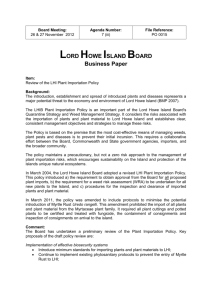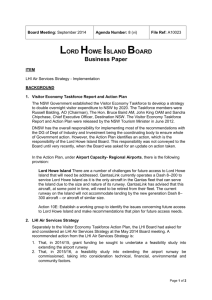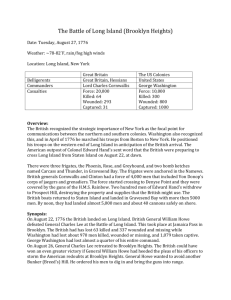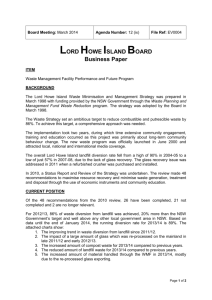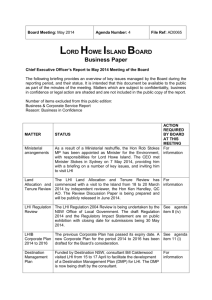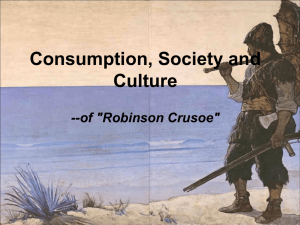Plant Importation Policy
advertisement
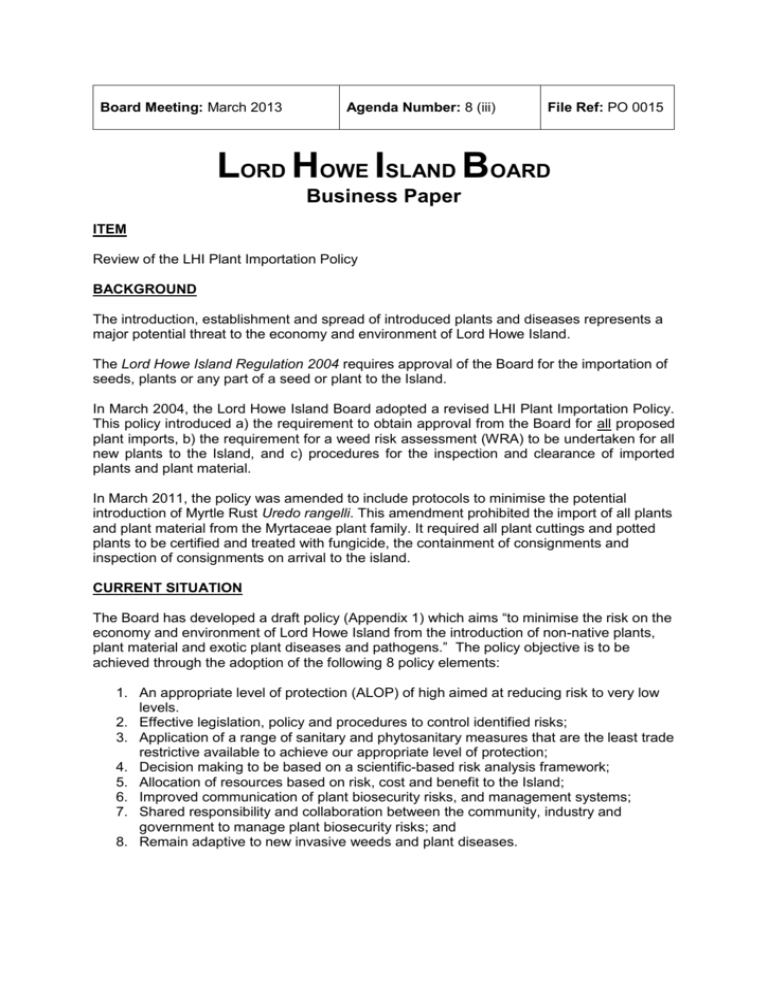
Board Meeting: March 2013 Agenda Number: 8 (iii) File Ref: PO 0015 LORD HOWE ISLAND BOARD Business Paper ITEM Review of the LHI Plant Importation Policy BACKGROUND The introduction, establishment and spread of introduced plants and diseases represents a major potential threat to the economy and environment of Lord Howe Island. The Lord Howe Island Regulation 2004 requires approval of the Board for the importation of seeds, plants or any part of a seed or plant to the Island. In March 2004, the Lord Howe Island Board adopted a revised LHI Plant Importation Policy. This policy introduced a) the requirement to obtain approval from the Board for all proposed plant imports, b) the requirement for a weed risk assessment (WRA) to be undertaken for all new plants to the Island, and c) procedures for the inspection and clearance of imported plants and plant material. In March 2011, the policy was amended to include protocols to minimise the potential introduction of Myrtle Rust Uredo rangelli. This amendment prohibited the import of all plants and plant material from the Myrtaceae plant family. It required all plant cuttings and potted plants to be certified and treated with fungicide, the containment of consignments and inspection of consignments on arrival to the island. CURRENT SITUATION The Board has developed a draft policy (Appendix 1) which aims “to minimise the risk on the economy and environment of Lord Howe Island from the introduction of non-native plants, plant material and exotic plant diseases and pathogens.” The policy objective is to be achieved through the adoption of the following 8 policy elements: 1. An appropriate level of protection (ALOP) of high aimed at reducing risk to very low levels. 2. Effective legislation, policy and procedures to control identified risks; 3. Application of a range of sanitary and phytosanitary measures that are the least trade restrictive available to achieve our appropriate level of protection; 4. Decision making to be based on a scientific-based risk analysis framework; 5. Allocation of resources based on risk, cost and benefit to the Island; 6. Improved communication of plant biosecurity risks, and management systems; 7. Shared responsibility and collaboration between the community, industry and government to manage plant biosecurity risks; and 8. Remain adaptive to new invasive weeds and plant diseases. The Board has also developed a draft strategy (Appendix B) which advises how the policy objectives will be achieved within an efficient and integrated framework of action. The strategy builds on the previous LHIB Plant Importation Policy, protocols to minimise the potential introduction of Myrtle Rust Puccinia psidii and recommendations from meetings with individuals, businesses, suppliers, and other government departments and recent Myrtle Rust training provided by the Australian Network for Plant Conservation Inc. It is recommended that the Board provide comment on the draft policy and strategy. Comments will then be incorporated into the documents. It is expected that a final Draft Policy and Strategy will be tabled at an Out of Session meeting in April 2013 to endorse placing them on public exhibition. RECOMMENDATION It is recommended that the Board: a) review the draft LHI Plant Importation Policy and Strategy and provide comments by Friday 29 March 2013. Prepared David Kelly Manager Environment & Community Development Endorsed Stephen Wills Chief Executive Officer
